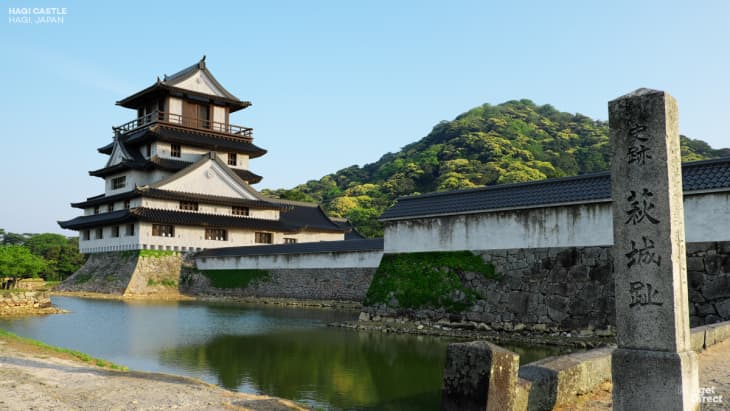See These Centuries-Old Asian Castles Come Back to Life in Digital GIFs

If more than a year spent on your home turf has you dreaming of a bucket list trip to the vastly diverse lands rich in culture, history, and heritage that make up Asia, one company has made it so you can live out your fairytale dreams right from home — at least virtually, for now.
Budget Direct has used a little editing magic to digitally restore six centuries-old castles across Asia that are in varying states of ruin and disrepair, creating gorgeous before and after GIFs that any history buff, fairytale aficionado, or casual viewer with a hefty dose of wanderlust is sure to enjoy.
Utilizing the expertise of a team of researchers, architects and digital CGI pros, the insurance company breathed new life into six castles in Japan, China, Iran, Afghanistan, and India, offering a virtual glimpse into the decades of history and legacy that exist now solely through what’s left of each structure and its surrounding areas.
Alamut Castle: Alamut Valley, Iran
As legend has it, military master Imam Hassan-i Sabbāh allegedly conquered this ruined mountain fortress without any bloodshed in 1090, securing its powers through strategic attacks (and also coining the modern term for “assassin” in the process — who knew?). Over the years, various conquerors destroyed the castle, and the area now serves as a popular hiking spot. Not much of the castle exists, but the Iranian government is working to partially restore it for tourists and locals alike to enjoy.
The Old Summer Palace: Beijing, China
This remnant of the Qing Dynasty in the early 18th century is not one palace but a vast landscape of palaces, lakes, gardens, towers, and sculptures that were largely destroyed by British and French military forces during battle in the Second Opium War. The pros chose to digitally restore the Yuanming Yuan’s Haiyantang (The Palace of Calm Seas), a two-story western-style palace with Chinese Zodiac imagery, palace columns, and a fountain centerpiece.
Hagi Castle: Hagi, Japan
After losing its territory in battle, Japan’s Mōri Samurai clan relocated to a small, charming seaside town in Hagi, with the new Hagi Castle serving as the capital of the new leading Chōshū Domain. The castle no longer exists at all after being dismantled by the Japanese government in 1874 in an effort to centralize and modernize the area though its stone base and part of its moat can still be seen by onlookers in the area.
Citadel of Ghazni: Ghazni, Afghanistan
When a former slave all the way back in 977 rebelled against ruling Iranian overlords to create his own Ghazni Empire, this citadel became an Afghani military linchpin, before being conquered by the British in 1839. Despite its long, illustrious history, it also has modern roots, serving as an American military base after the U.S. invaded Afghanistan in 2001.
Many factors, including neglect, war, and weather have “heavily damaged” Ghazni, with 14 of its original 32 towers collapsing over time — one as recently as 2019. Today, what’s left of Ghazni’s walls, towers, and citadel are all in danger of permanent collapse.
Takeda Castle: Asago, Hyōgo, Japan
This 15th century fortress kicked off a period of chaos in Japanese history, after “the Red Monk” helped usher in the country’s Sengoku period. When a subsequent conqueror, Toyotomi Hideyoshi, lost some pivotal battles, the castle began to fall into a state of disrepair.
Its ruins now sit 353 meters above sea level, and though no buildings currently exist, there are a row of temples and the stone foundation of the castle underwent minor restorations in the late 20th century. On foggy mornings, the remnants appear to float above the clouds.
Raigad Fort: Raigad, Maharashtra, India
Parts of this expansive fort date back to 1030 AD, but much of its more modern features were erected in 1674. The British East India Company in 1818 destroyed much of the structure in 1818, but visitors can still view the remains of two of the fort’s three watchtowers, several reservoirs, stone merchant stalls, and a famous wall named Hirakani Buruj. The main entrance can be viewed up close and personal through a steep walk up 1,737 steps… or through a leisurely aerial tram ride.